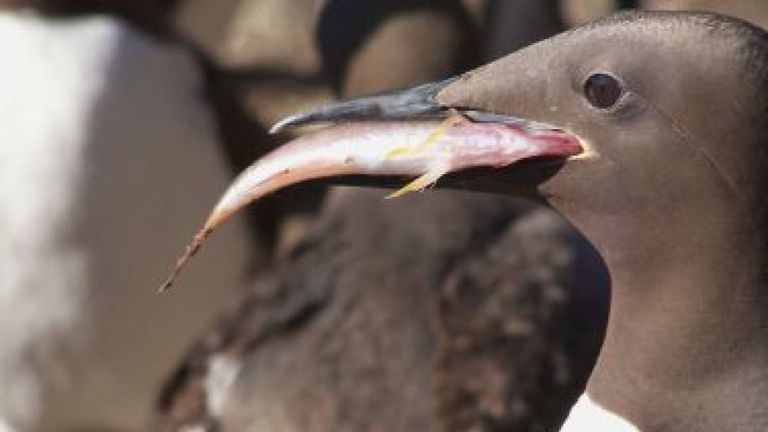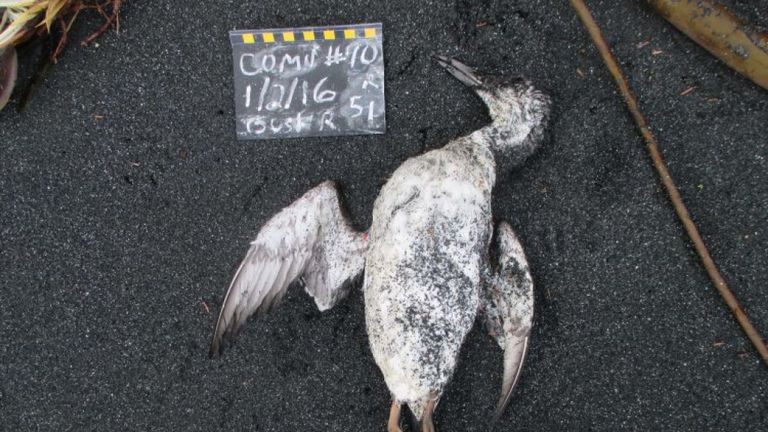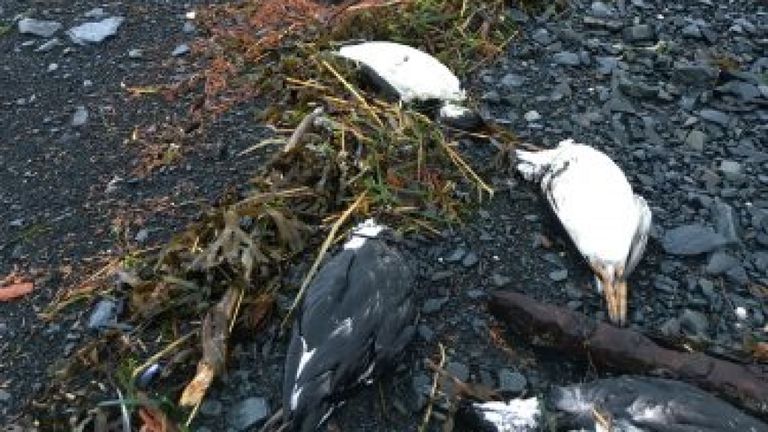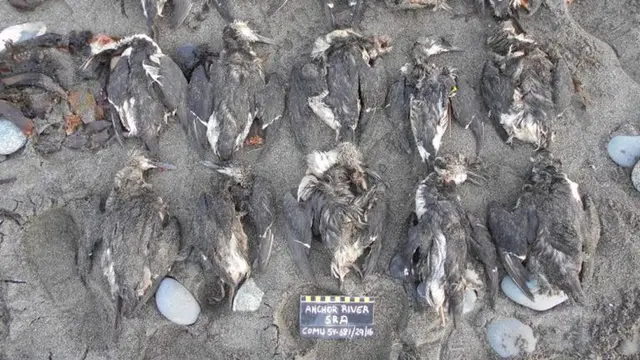One million birds are feared dead due to an unprecedented heatwave over an enormous stretch of the Pacific known as "the blob".
The fish-eating murre is thought to have fallen victim to the large patch of increasingly warm water, which led to thousands of the seabirds washing ashore along the west coast of North America.
The deaths, recorded between the summer of 2015 and the spring of 2016, are thought to have been caused by starvation as their usual food sources were severely impacted by the changing conditions in the ocean.

Image:The murre is a common fish-eating bird. Pic: University of Washington
The so-called blob refers to a record-breaking patch of warm water that formed between late 2013 and 2016 due to a powerful weather phenomenon called
El Nino
.
Millions of people and animals alike were affected across Africa, Central America, South East Asia and the Pacific, including severe drought in Venezuela and Australia and heavy rain in Uruguay, Paraguay and Brazil.
El Nino created the blob, which was a 1,000 mile stretch of ocean that warmed up by 3C (5.4F) to 6C (10.8F) - devastating marine wildlife from shrimp to sea lions.
Scientists have warned that such events will likely become more frequent due to climate change.
According to a University of Washington study detailed in the journal Plos One, 62,000 dead or dying murre birds washed up on the coast due to an "unexpected squeeze" on their food supply as a result of the blob.
Most of them were in Alaska, with 4,600 carcasses found every kilometre (0.62 miles), but researchers estimate the overall number to have died to be around one million.

Image:The seabirds were found over a 12 month period. Pic: University of Washington
US Geological Survey biologist John Piatt, the lead author on the study and an affiliate of the university, said the discoveries made were "astonishing and alarming".
"The magnitude and scale of this failure has no precedent," he said.
"It was astonishing and alarming, and a red-flag warning about the tremendous impact sustained ocean warming can have on the marine ecosystem."

Image:Most of the birds were found on the shore of Alaska. Pic: University of Washington
As many of the birds that died were breeding-age adults, colonies across the region failed to produce chicks in the numbers that would normally be expected in the years during and after the heatwave.
The study says the blob caused the largest mass die-off of seabirds in recorded history and should serve as a vital warning for what may happen in future.
Scientists at the same university recently identified another marine heatwave forming off the coast of Washington, stretching up towards the Gulf of Alaska.
 简体中文
简体中文

